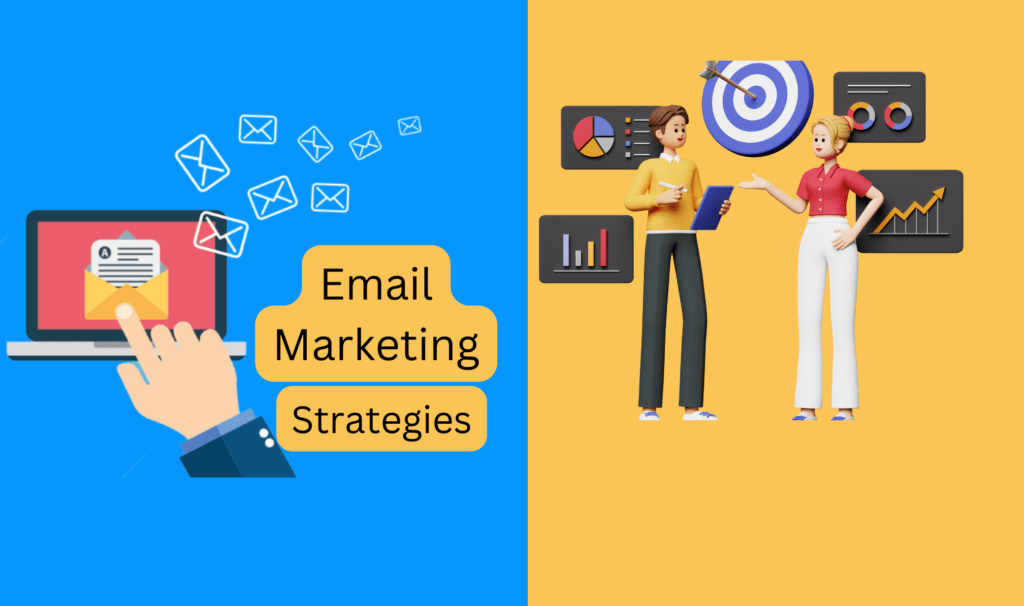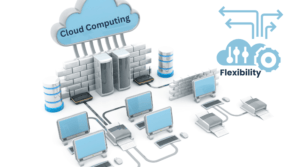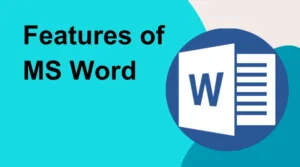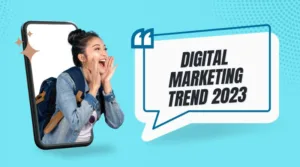Email marketing is a very successful and extensively used method for businesses of all sizes in today’s digital world. Email marketing has demonstrated its effectiveness as a valuable tool for businesses aiming to enhance their online visibility and boost sales. This is attributed to its ability to reach a wide range of audiences, foster lead generation, and facilitate conversions. This article explores the key email marketing strategies that have been proven successful for businesses in various industries. From building a responsive email list to crafting compelling content, we’ll delve into the tactics that can help you achieve remarkable results through email marketing.
Table of Contents
Why Is Email Marketing Important for Your Business?
Email marketing is a vital tool that businesses may utilize to connect with their target audience and achieve success. It offers several benefits that make it an essential part of any marketing strategy. Let’s take a closer look at Why email marketing is Important for Your business.
Benefits of Email Marketing
Cost-Effectiveness
Email marketing is a cost-effective way to reach a large number of people. Compared to traditional marketing channels like print or television, email marketing allows businesses to send messages at a lower cost, making it suitable for businesses of all sizes.
Direct Reach
With email marketing, you have a direct line of communication with your audience. By sending emails to their inbox, you have a higher chance of getting noticed compared to other forms of advertising that might get lost in the noise.
High ROI Potential
Email marketing possesses the capacity to yield a substantial return on investment (ROI). When executed correctly, emails have the ability to stimulate sales, generate leads, and enhance customer engagement. The capability to personalize emails and target specific segments of your audience further augments the likelihood of converting leads into customers.
By effectively utilizing email marketing, businesses can cultivate relationships with their customers, keep them informed about new products or promotions, and ultimately bolster sales and revenue.
In summary, email marketing holds significance as it presents a cost-effective means of directly reaching your audience and holds the potential to generate a high return on investment. It empowers businesses to forge connections, drive sales, and accomplish marketing objectives.
Understanding Your Audience
To effectively engage your audience through email marketing, it is crucial to understand them on a deeper level. Start by conducting market research to gain insights into their preferences, behaviors, and pain points. Building buyer personas helps create targeted content that resonates with specific segments of your audience. Segmenting your email list allows you to deliver personalized messages that cater to the unique needs and interests of each group.
Building a High-Quality Email List
One of the key aspects of successful email marketing is having a high-quality email list. This involves building a list of subscribers who willingly choose to receive your emails and engaging with them effectively. Here are two important strategies to consider:
Building an Opt-In Email List
To ensure that your email recipients are genuinely interested in your content, it’s crucial to focus on building an opt-in email list. This means that individuals voluntarily subscribe to receive your emails. Here are some effective ways to accomplish this:
Implementing Lead Generation Strategies
Implement strategies to attract potential subscribers and capture their contact information. This can include creating compelling content such as ebooks, guides, or exclusive offers that require users to provide their email addresses in exchange for access.
Leveraging Website Sign-Up Forms
Place sign-up forms prominently on your website, blog, or landing pages. Make the forms visually appealing, easy to fill out, and clearly communicate the value subscribers will receive by joining your email list.
Creating Compelling Lead Magnets
Offer lead magnets, such as free resources or downloadable content, that align with your audience’s interests and needs. These incentives encourage visitors to subscribe to your email list to gain access to valuable information.
Understanding the Importance of Segmentation
When you segment your email list, you divide your subscribers into smaller groups based on certain criteria. This allows you to send targeted and personalized emails tailored to their preferences. Here’s why segmentation is important:
Segmenting Based on Customer Data
By segmenting your email list, you can send more personalized content that resonates with each group’s interests and characteristics. This increases engagement and improves the chances of conversions.
Utilizing Behavioral Segmentation
Segmenting based on customer data and behavior enables you to send relevant content at the right time. For example, you can send specific promotions to customers who have previously purchased similar products or follow-up emails to subscribers who haven’t engaged recently.
Example: Suppose you run an online clothing store. By segmenting your email list into categories such as men’s fashion, women’s fashion, and kids’ clothing, you can send tailored emails featuring relevant products, style tips, and exclusive offers.
.
Improved Email Performance
Sending targeted emails to segmented lists often results in higher open rates, click-through rates, and overall engagement. Subscribers are more likely to engage with content that is specifically tailored to their needs.
Crafting Compelling Emails
To capture the attention of your subscribers, it is essential to craft compelling and engaging emails. Consider the following tactics:
Writing attention-grabbing subject lines:
The subject line is the first thing recipients see in their inboxes, so it needs to be attention-grabbing. Consider these tips:
Grabbing Attention with Personalization
Use the recipient’s name or other relevant details to make the subject line more personalized.
For Example:
“John, Get 50% Off Your Favorite Products – Exclusive for You!”
In this example, the recipient’s name (John) is used to personalize the subject line. Addressing the recipient directly, it creates a sense of individuality and relevance.
The subject line also mentions a special offer (“50% Off Your Favorite Products”) that is exclusive to the recipient, further enhancing personalization and enticing them to open the email.
Personalizing subject lines in this way can make the recipient feel valued and increase the chances of them engaging with the email content.
Remember to use the recipient’s name or other relevant details to create a personalized experience and establish a stronger connection with your audience.
Creating a Sense of Urgency
Create a sense of urgency by including time-sensitive offers or limited-time promotions.
For Example
“Hurry! Only 2 Hours Left to Claim Your 50% Off Coupon!”
In this example, the subject line emphasizes the limited time available to claim the offer by mentioning that there are only 2 hours left.
This creates a sense of urgency and prompts the recipient to take immediate action. The subject line also highlights the benefit of the offer, stating that the recipient can get a 50% discount by using the provided coupon.
By incorporating time-sensitive offers or limited-time promotions in the subject line, you can motivate recipients to open the email and make a purchase before the opportunity expires.
This strategy taps into the fear of missing out (FOMO) and encourages swift action, driving engagement and conversions.
Using Emotional Triggers
Evoke emotions like curiosity, excitement, or fear of missing out to pique the recipient’s interest.
For Example:
“Unlock the Secret to Irresistible Chocolate Recipes!”
In this example, the subject line piques the recipient’s curiosity by hinting at the existence of a secret to creating irresistible chocolate recipes.
It appeals to their interest in discovering something new and exciting. By using words like “unlock” and “irresistible,” it creates a sense of anticipation and excitement, making the recipient eager to open the email and explore the content further.
By evoking emotions like curiosity and excitement, you can capture the recipient’s attention and increase the chances of them engaging with your email.
Crafting subject lines that tap into the recipient’s emotions can create a strong desire to learn more, ultimately leading to higher open rates and engagement.
Clarity and Conciseness
Keep the subject line concise and clear to convey the value or benefit of opening the email.
For Example:
“Save 20% on Your Next Purchase – Limited Time Offer Inside”
In this example, the subject line immediately communicates the benefit to the recipient by highlighting the opportunity to save 20% on their next purchase.
It also creates a sense of urgency by mentioning that it is a limited-time offer. The subject line is concise and straightforward, clearly stating the value the recipient can gain by opening the email.
By keeping the subject line concise and clear, you ensure that the recipient quickly understands the benefit or value they will receive by opening the email.
This approach increases the chances of them opening it and engaging with the content inside, leading to higher conversion rates and customer satisfaction.
Designing Eye-Catching Emails
The visual appeal of your emails plays a significant role in capturing your subscribers’ attention. Consider these design tips:
Consistent Branding and Visual Appeal
Use your brand’s colors, fonts, and logos to create a consistent and recognizable email design.
Mobile-Friendly Layouts
Ensure that your emails are optimized for mobile devices, as a large portion of subscribers open emails on their smartphones or tablets.
Incorporate Multimedia
Use images, videos, or GIFs to make your emails visually appealing and enhance the overall user experience.
Clear Call-to-Action (CTA)
Place a clear and prominent CTA button or link that directs subscribers to take the desired action.
Crafting Persuasive Copy
The content of your email should be compelling and persuasive in order to prompt action. Consider the following writing tips:
Clear and Concise Messaging:
Ensure that your email content is concise and straightforward. To improve readability, use short paragraphs, bullet points, and subheadings.
Benefits-Oriented Language:
Focus on highlighting the benefits that the recipient will gain from your offer or message. Use language that emphasizes how they will benefit from taking action.
Including a Strong Call-to-Action:
Clearly state the desired action you want the recipient to take and make it easy for them to do so. Use actionable language and create a sense of urgency if appropriate.
Personalize When Possible
Whenever possible, personalize the content by including the recipient’s name or referencing their past interactions. This makes the content more relevant and tailored to their needs.
Personalizing Email Campaigns
Personalization is a powerful strategy in email marketing that allows you to tailor your messages to individual subscribers, increasing engagement and driving better results. Here are some key aspects to consider when personalizing your email campaigns:
Utilizing Customer Segmentation:
Segmenting your email list based on customer data and behavior helps you categorize subscribers into specific groups. This allows you to send targeted and relevant emails to each segment. Consider the following segmentation criteria:
Demographics: Divide your audience based on demographic factors such as age, gender, location, or occupation.
Purchase History: Segment customers based on their past purchases or browsing behavior to send product recommendations or personalized offers.
Engagement Level: Categorize subscribers based on their engagement with your emails, such as opens, clicks, or conversions. Send re-engagement campaigns to inactive subscribers or rewards to highly engaged ones.
Implementing Dynamic Content:
Dynamic content enables you to customize the content within your emails based on individual subscriber attributes or behavior. This level of personalization can significantly enhance engagement. Some ways to utilize dynamic content include:
Product Recommendations: Showcase personalized product recommendations based on past purchases or browsing history.
Location-specific Content: Customize content based on the recipient’s geographical location, such as local events or promotions.
Personalized Greetings: Begin your email with a personalized greeting using the recipient’s name or other relevant details.
Personalizing Sender Names and Email Copy
Personalization extends beyond just the content within the email. Consider these approaches:
Sender Names: Use a recognizable and personable sender name that recipients can relate to, such as a specific team member or a friendly brand persona.
Email Copy: Write email copy that speaks directly to the recipient. Use their name, reference past interactions or purchases, and address their specific needs or pain points.
Automating Triggered Emails:
Automation allows you to send emails triggered by specific actions or events, delivering timely and relevant content. Consider the following automated email campaigns:
Welcome Series: Send a series of emails to new subscribers, introducing them to your brand, products, and services.
Abandoned Cart Recovery: Remind customers who left items in their shopping cart to complete their purchase.
Birthday or Anniversary Emails: Send personalized emails with special offers or greetings to celebrate customers’ special occasions.
Personalizing your email campaigns shows your subscribers that you understand their preferences and needs, leading to increased engagement and conversions. By utilizing segmentation, dynamic content, personalized sender names and email copy, and automated triggered emails, you can create highly relevant and effective email experiences for your subscribers.
Optimizing Email Deliverability
To ensure that your emails reach your subscribers’ inboxes, optimize email deliverability by:
Building a clean email list: Regularly remove inactive or invalid email addresses from your list to maintain a high-quality subscriber base.
Implementing double opt-in processes: By using double opt-in, you confirm subscribers’ interest and reduce the likelihood of sending emails to unengaged recipients.
Avoiding spam triggers: Stay clear of spam triggers by avoiding excessive use of capital letters, misleading subject lines, or triggering words that may send your emails to the spam folder.
Regularly Removing Inactive Subscribers: Periodically review your email list and remove subscribers who haven’t engaged with your emails for an extended period. Inactive subscribers can negatively impact your deliverability rates.
Handling Bounces and Unsubscribes: Monitor bounced emails and promptly remove email addresses that consistently bounce. Additionally, honor unsubscribe requests promptly to maintain a healthy subscriber list.
Following Email Deliverability Best Practices
To improve email deliverability, it’s crucial to adhere to best practices that enhance your sender reputation and avoid spam triggers. Consider the following tips:
Verify Sender Authentication: Authenticate your domain and configure SPF (Sender Policy Framework), DKIM (DomainKeys Identified Mail), and DMARC (Domain-based Message Authentication, Reporting, and Conformance) records. This helps establish your credibility as a sender and reduces the chances of your emails being marked as spam.
Avoid Spam Triggers: Craft your emails to avoid common spam triggers. This includes using clear and relevant subject lines, avoiding excessive use of capital letters or exclamation marks, and refraining from using deceptive or misleading content.
Manage Sender Reputation: Monitor your sender reputation by regularly reviewing delivery reports, spam complaint rates, and engagement metrics. Poor engagement and high complaint rates can harm your reputation, leading to lower deliverability rates.
Optimize Email Design and Formatting: Ensure that your emails are well-designed, mobile-friendly, and properly formatted. Emails that are difficult to read or display incorrectly may be treated as suspicious by email providers.
By maintaining a clean email list and following email deliverability best practices, you can increase the chances of your emails reaching the recipients’ inboxes. This enhances engagement with your subscribers and improves the overall effectiveness of your email marketing efforts. a
Analyzing and Improving Performance
To continually improve your email marketing efforts, focus on tracking key metrics, conducting A/B testing, and using analytics:
Tracking key metrics: Monitor open rates, click-through rates, conversions, and other relevant metrics to gauge the success of your email campaigns.
Open Rates: Open rates indicate the percentage of recipients who opened your email. It provides insights into the effectiveness of your subject lines and helps gauge the overall engagement of your audience.
Click-Through Rates (CTR): CTR measures the percentage of recipients who clicked on a link within your email. It helps evaluate the relevance and appeal of your content and the effectiveness of your call to action.
Conversion Rates: Conversion rates track the percentage of recipients who completed a desired action, such as making a purchase, filling out a form, or subscribing. This metric directly reflects the effectiveness of your email in driving desired outcomes.
Bounce Rates: Bounce rates measure the percentage of emails that were not delivered successfully. High bounce rates may indicate issues with email deliverability or the quality of your email list.
Unsubscribe Rates: Unsubscribe rates indicate the percentage of recipients who opted out of receiving further emails. Monitoring this metric helps assess the relevancy and engagement of your content and the overall satisfaction of your audience.
Return on Investment (ROI): ROI measures the financial return generated from your email campaigns. It helps evaluate the cost-effectiveness and profitability of your email marketing efforts.
A/B testing subject lines and email designs: Experiment with different subject lines, email layouts, or CTAs to identify the most effective strategies for your audience.
Using analytics to refine email marketing strategies: Leverage analytics tools to gain insights into subscriber behavior and preferences. Analyze this data to refine your email marketing tactics and better serve your audience.
Industry-Specific Tips and Examples
Tailor your email marketing strategies to suit the unique needs of your industry:
Email marketing tactics for e-commerce: Showcase new products, offer personalized product recommendations, send abandoned cart reminders, and provide exclusive discounts to boost conversions.
Email strategies for B2B businesses: Focus on building relationships through informative content, case studies, industry insights, and personalized nurturing sequences to drive lead generation and conversions.
Email campaign ideas for service-based industries: Highlight success stories, provide valuable tips or educational content, and offer consultations or free trials to showcase your expertise and encourage engagement.
Conclusion
In conclusion, email marketing is a powerful tool that can drive significant results across all industries. By understanding your audience, crafting compelling emails, optimizing deliverability, and analyzing performance, you can unlock the full potential of your email campaigns. Implement these proven tactics and witness the transformative power of email marketing in your business. Embrace email marketing as a core element of your marketing strategy and leverage its influence to propel your success.
FAQs
The best time to send marketing emails can vary depending on your target audience and industry. However, there are some general guidelines to consider. Studies have shown that Tuesday, Wednesday, and Thursday tend to have higher email open rates. As for the time of day, it’s often recommended to send emails during the late morning or early afternoon when people are more likely to check their inboxes. However, it’s essential to test different send times and analyze the results to determine the optimal timing for your specific audience.
The frequency of your emails will depend on your specific audience and the nature of your business. It’s important to find a balance that keeps your subscribers engaged without overwhelming them. Consistency is key, so it’s better to have a regular email schedule rather than sporadic or irregular sending patterns. Some businesses find success with weekly or bi-weekly emails, while others may send emails monthly or even daily. Test different frequencies and monitor your engagement metrics to determine what works best for your audience.
Using purchased email lists is generally not recommended for your email marketing campaigns. These lists often contain email addresses of individuals who have not given consent to receive emails from your specific business. Sending emails to purchased lists can result in low engagement, high unsubscribe rates, and damage to your sender reputation. It’s best to focus on building your own organic email list through opt-in methods like website sign-ups, lead generation forms, and providing valuable incentives to your target audience.
To improve open rates, craft compelling subject lines, test different variations, and avoid spam triggers. Personalization, curiosity, and clear benefits can also increase the likelihood of recipients opening your emails.
To re-engage inactive subscribers, consider sending targeted re-engagement campaigns with compelling offers or exclusive content. Also, regularly clean your email list by removing inactive or unresponsive subscribers.






3 thoughts on “Email Marketing Strategies: Proven Tactics for All Industries”
Pingback: How to Learn Digital Marketing Step by Step: A Comprehensive Guide for Beginners. - Tinytech Things
Pingback: ChatGPT and On-Page SEO: The Perfect Duo for Optimized Content Creation - Tinytech Things
Pingback: The Do's And Don'ts Of Email Marketing: A Comprehensive Guide. - Tinytech Things
Comments are closed.